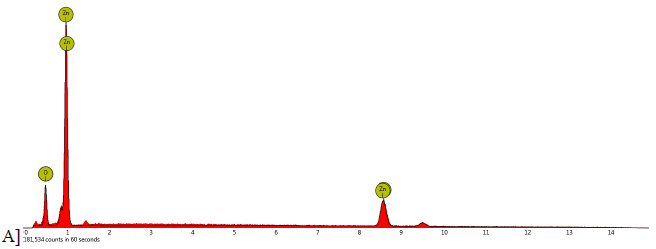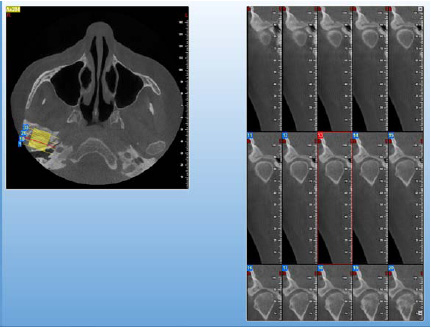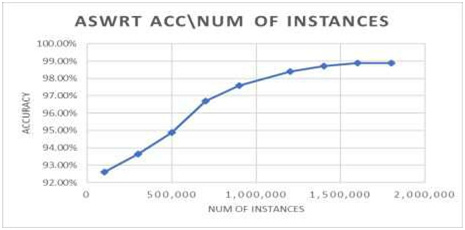1Department of Zoology, Lumding College, Lumding
2,3Department of Life Science and Bioinformatics Assam University, Diphu Campus, Diphu
4Department of Zoology, Lumding College, Lumding
Corresponding author Email: jashodeb@gmail.com
Article Publishing History
Received: 10/04/2018
Accepted After Revision: 11/05/2018
Langting stream of Dima Hasao district of Assam originates from Nobdi Langting, the border area of Nagaland, Manipur and Dima Hasao and confluents to Diyung river (originates from Borail range). It is about 38 km from Lumding and is one of the important sources of water for the people living near the river. All the domestic sewage, industrial effluents and solid waste find its way to this stream via channels which may affect the quality of flowing water. In the proposed study an attempt has been made to analyse certain physico-chemical parameters of Langting stream and assess the water quality. From the data of the studies carried out on riparian vegetation it was found that it is at an alarming state and is a subject of great concern. The management of riparian areas is a vital environmental and economic. The values of the physico-chemical parameters of surveyed hill streams are within the permissible limits. Though there are monthly fluctuations in the physico-chemical parameters of surveyed hill streams but the result of the physico-chemical parameters reveals that the water quality is still good and the streams are very productive nature.
Langting Stream, Water Quality, Physiochemical Parameters, Pollution
Paul N, Tamuli A. K, Teron R, Arjun J. A Survey on Analysis of Physico-Chemical Parameters of Flowing Water of Langting Stream of Dima Hasao Assam, India. Biosc.Biotech.Res.Comm. 2018;11(2).
Paul N, Tamuli A. K, Teron R, Arjun J. A Survey on Analysis of Physico-Chemical Parameters of Flowing Water of Langting Stream of Dima Hasao Assam, India. Biosc.Biotech.Res.Comm. 2018;11(2). Available from: https://bit.ly/2KHrVUc
Introduction
In general, out of total land water 1% is available for agriculture, drinking domestic, purpose power generation, industrial consumption, transportation and waste disposal (Mishra et al 2002, Gupta et al. 2007). Although Dima Hasao, a hill district in Assam is relatively free from pollution as there are no major industries in the district. However, mining activities and of organic pollution due to household materials gradually polluting in certain areas. Langting stream of Dima Hasao district is a tributary of Diyung river. People living near the river directly pollute the water by taking bath, washing clothes, vehicles and utensils in it. All the domestic sewage, industrial effluents and solid waste find its way to this stream via channels which may affect the quality of water and create health problems, (Raja et al., 2002). The physical and biological characteristics of water determine the quality of water (Diersing, et. al., 2009). The significant changes in these physicochemical parameters lead to assess the water quality of Langting stream through analysis. The salinity, HCO3, pH, depth, water temperature are responsible for variations in phytoplankton community (Sharif et al 2017).
In eastern Himalayan lotic ecosystem of different environmental factors anthropogenic and other factors may be considered as an components of pollution, (Chowdhury et. al 2017). There is a direct interrelation between physicochemical and biological parameters (Kaur 2017). Water velocity is also an important factor affecting aquatic fauna, (Singh et. al. 2017).
 |
Figure 1: Bar Diagram Of Water Temperature Of Langting River |
 |
Figure 2: Bar Diagram Of Dissolved Oxygen Of Langting River |
Material and Methods
Langting stream segment was divided into two parts-up and down stream with a length of 8 km. The selected parameters were studied on seasonal basis. The stretches were demarcated into five sampling stations viz: S1, S2, S3, S4 and S5. Water samples were collected from these 5 sampling sites from various locations of river Langting monthly during the study period. From each locality five samples were collected randomly in cans (IL). Except for dissolved oxygen (DO) where 300 ml glass stoppers were used for sample collection and then brought to laboratory for analysis. Following key parameters such as water temperature, pH, depth, water flow and conductivity were determined in the field because of their unstable nature. Water temperature was recorded by mercury thermometer, turbidity with Seccehi disc, pH with pen meter, (model Hanna:H196107) conductivity meter (Hanna H196303) and water current by flow meter. The laboratory analysis of the samples was done using standard methods, (APHA 1998). Alkalinity and free CO2 were determined by titration method. Dissolved oxygen (DO) was determined by Winker’s modified method.
 |
Figure 3: Bar Diagram Of Free Carbon Dioxide Of Langting River |
Results and Discussion
The analysis of various physico-chemical parameters of Langting stream at stations S1, SII, SIII, SIV, SV, are represented in Table-1(b,c,d e f). Air temperature: The average of air temperature was found to be highest in monsoon. The atmospheric temperature recorded post monsoon varied from 22.67˚C to 25˚C with the lowest mean recorded from S3(22.67˚C). Season wise analysis showed that the mean temperature of water surface was highest during monsoon period. The rise in temperature during monsoon declined with the advent of post-monsoon period. Highest mean was recorded from S1 (28.53˚C) and the lowest mean from S3 (19.77˚C). Water temperature was optimum during pre-monsoon but the temperature remained lesser than atmospheric throughout the entire period of study. It showed positive correlation with depth, atmospheric temperature. Water temperature showed negative correlation with pH, TDS, electrical conductivity, dissolved oxygen and phosphate. In S2, it showed negative correlation with pH, DO and PO4. Water temperature is responsible for variation in Phytoplankton community, (Sharif et. al 2017).
| Table 1a: showing details of sampling sites | ||
| Sampling site | Name | GPS position |
| S1 | Langting I | 25˚29∼48N
93˚6∼45E |
| S2 | Langting II | 25˚26∼40N
93˚6∼99E |
| S3 | Langting III | 25˚28∼52N
93˚49∼9E |
| S4 | Langting IV | 25˚26∼50N
93˚48∼20E |
| S5 | Langting V | 25˚30∼25N
93˚46∼29E |
| Table 1(b): Physicochemical parameters of Langting stream (pre-monsoon) | ||||||||||||
| Station | Depth
(m) |
Flow (m/s) | Air temp. (˚C) | Water temp (˚C) | Turbidity
(NTP) |
pH | TDS
(µs/cm) |
Conductivity
(µs/cm) |
DO
(ppm) |
Free
CO2 |
PO4 | Alkalinity |
| S1 | 0.5 | 2.40 | 28.72 | 24.5 | 2.68 | 7.72 | 45.2 | 70.2 | 6.92 | 4.51 | 0.02 | 48.17 |
| S2 | 0.38 | 1.0 | 28.54 | 25.6 | 3.32 | 8.12 | 47.2 | 72.8 | 6.50 | 8.06 | 0.04 | 50.20 |
| S3 | 0.48 | 2.3 | 27.62 | 23.7 | 3.29 | 7.8 | 48.6 | 68.8 | 7.2 | 7.05 | 0.07 | 55.26 |
| S4 | 0.41 | 2.1 | 27.58 | 24.2 | 2.82 | 7.1 | 47.5 | 70.3 | 6.8 | 8.05 | 0.09 | 54.28 |
| S5 | 0.49 | 1.07 | 28.01 | 25.6 | 2.88 | 7.3 | 46.8 | 71.2 | 6.6 | 7.04 | 0.11 | 49.26 |
| Table 1(c): Physicochemical parameters of Langting stream (monsoon) | ||||||||||||
| Station | Depth
(m) |
Flow (m/s) | Air temp. (˚C) | Water temp (˚C) | Turbidity
(NTP) |
pH | TDS
(µs/cm) |
Conductivity
(µs/cm) |
DO
(ppm) |
Free
CO2 |
PO4 | Alkalinity |
| S1 | 1.68 | 2.9 | 32.8 | 28.5 | 3.52 | 7.13 | 28.67 | 52.33 | 5.28 | 7.25 | 0.02 | 47.17 |
| S2 | 1.38 | 2.98 | 31.5 | 27.8 | 4.02 | 7.5 | 27.14 | 54.2 | 4.67 | 8.49 | 0.03 | 44.20 |
| S3 | 0.98 | 2.20 | 32.2 | 22.4 | 3.87 | 6.7 | 25.18 | 53.6 | 5.1 | 6.98 | 0.03 | 45.26 |
| S4 | 1.19 | 2.13 | 33.2 | 24.5 | 3.82 | 7.2 | 26.23 | 52.13 | 5.2 | 7.26 | 0.02 | 44.28 |
| S5 | 1.25 | 2.23 | 32.5 | 27.1 | 4.12 | 7.2 | 26.29 | 52.18 | 5.18 | 9.01 | 0.03 | 44.26 |
| Table 1(d): Physicochemical parameters of Langting stream (post-monsoon) | ||||||||||||
| Station | Depth
(m) |
Flow (m/s) | Air temp. (˚C) | Water temp (˚C) | Turbidity
(NTP) |
pH | TDS
(µs/cm) |
Conductivity
(µs/cm) |
DO
(ppm) |
Free
CO2 |
PO4 | Alkalinity |
| S1 | 0.8 | 1.7 | 22.9 | 23 | 2.82 | 7.6 | 45.8 | 70.25 | 8.67 | 5.3 | 0.09 | 66.2 |
| S2 | 0.72 | 1.2 | 24 | 22 | 3.42 | 8.73 | 48.6 | 74.62 | 8.23 | 6.2 | 0.12 | 67.2 |
| S3 | 0.52 | 1.2 | 22.67 | 19 | 2.62 | 6.54 | 44.5 | 71.28 | 8.3 | 5.2 | 0.08 | 68.2 |
| S4 | 1.02 | 1.3 | 23 | 23 | 3.45 | 7.2 | 47.6 | 73.28 | 5.67 | 5.8 | 0.07 | 67.6 |
| S5 | 1.03 | 1.1 | 24 | 22 | 2.82 | 7.8 | 23.67 | 72.66 | 7.85 | 5.7 | 0.09 | 67.2 |
| Table-1(e): Physicochemical parameters of Langting stream (winter) | ||||||||||||
| Station | Depth
(m) |
Flow (m/s) | Air temp. (˚C) | Water temp (˚C) | Turbidity
(NTP) |
pH | TDS
(µs/cm) |
Conductivity
(µs/cm) |
DO
(ppm) |
Free
CO2 |
PO4 | Alkalinity |
| S1 | 0.5 | 1.2 | 19 | 16 | 1.99 | 7.2 | 45.8 | 70.25 | 8.2 | 5.3 | 0.09 | 76.1 |
| S2 | 0.54 | 1.1 | 20 | 17 | 1.82 | 7.8 | 48.6 | 74.62 | 8.4 | 6.2 | 0.12 | 76.2 |
| S3 | 0.42 | 1.1 | 19 | 17 | 1.34 | 7.7 | 44.5 | 71.28 | 8.3 | 5.2 | 0.08 | 65.2 |
| S4 | .6 | 1.2 | 20 | 17 | 1.45 | 7.1 | 46.2 | 73.28 | 7.9 | 5.8 | 0.07 | 67.5 |
| S5 | .9 | 1.3 | 18 | 15 | 1.76 | 7.8 | 46.5 | 72.66 | 7.85 | 5.7 | 0.09 | 58.2 |
| Table-1(f): Correlation Coefficient of Physicochemical parameters of Langting stream | ||||||||||||
| Depth
(m) |
Flow (m/s) | Air temp. (˚C) | Water temp (˚C) | Turbidity
(NTP) |
pH | TDS
(µs/cm) |
Conductivity
(µs/cm) |
DO
(ppm) |
Free
CO2 |
PO4 | Alkalinity | |
| Depth
(m) |
1 | |||||||||||
| Flow (m/s) | -0.069 | 1 | ||||||||||
| Air temp. (˚C) | 0.521 | -0.482 | 1 | |||||||||
| Water temp (˚C) | 0.315 | 0.661 | -0.516 | 1 | ||||||||
| Turbidity
(NTP) |
0.585 | -0.240 | -0.288 | -0.246 | 1 | |||||||
| pH | 0.115 | -0.249 | 0.067 | -0.032 | 0.058 | 1 | ||||||
| TDS
(µs/cm) |
-0.784 | 0.192 | -0.638 | -0.084 | -0.573 | 0.001 | 1 | |||||
| Conductivity
(µs/cm) |
-0.033 | -0.782 | 0.354 | -0.582 | 0.005 | 0.425 | -0.108 | 1 | ||||
| DO (ppm) | -0.657 | 0.540 | 0.503 | 0.406 | -0.787 | 0.150 | 0.644 | -0.410 | 1 | |||
| Free CO2 | -0.071 | 0.468 | 0.704 | 0.664 | -0.336 | 0.075 | 0.142 | -0.598 | -0.433 | 1 | ||
| PO4 | 0.156 | 0.419 | 0.458 | 0.358 | -0.554 | 0.027 | 0.615 | -0.384 | -0.275 | 0.543 | 1 | |
| Alkalinity | 0.238 | 0.350 | 0.245 | 0.067 | -0.675 | 0.170 | -0.291 | -0.544 | 0.390 | 0.579 | 0.378 | 1 |
 |
Figure 4: Bar Diagram Of Alkalinity Of Langting River |
The present study recorded low values of turbidity. The temporal and spatial variation in turbidity showed a similar trend in sampling sites. Turbidity showed positive correlation with depth, flow, Free CO2. The rain water brought large amount of dissolved and suspended inorganic and organic material that make water turbid and causes lower transparency in the rainy months, (Sawant et al., 2010, Tims and Midglay 1970). The pH of the sampling sites were found to be slightly alkaline during study period and showed range of variation during sampling sites. The pH showed a decreasing trend during the monsoon which gradually increased during post-monsoon season. Maximum value of pH was recorded at S2 (8.73) and minimum value at S3 (6.54) in Langting stream. The pH value between 6.5 and 8.5 usually indicate good water quality, (Baruah and Hazarika, 2011). pH values of 5.5 or less are considered as risky, (Sawyer et al 1978). The salinity, HCO3, pH depth are also responsible for variation in phytoplankton community, (Sharif et. al 2017).
Total Dissolved Solids (TDS): The mean of two years data of TDS at the sampling sites showed seasonal cycle, maximum during pre-monsoon and post- monsoon. The values of TDS during pre-monsoon ranged from 43.44 ppm-47.3 ppm with highest mean recorded from S2(47.2 ppm). During monsoon the values fluctuated between 23.67 ppm-26.65 ppm amongst the sampling sites, lowest mean was recorded from S3 (24.12 ppm),
Electrical conductivity(EC) showed similar seasonal trend as TDS with high values recorded during pre-monsoon and low values during monsoon. Direct relation was observed between Electrical conductivity and dissolved oxygen in S1. In S2 and S3, it showed positive correlation with DO and phosphate concentration. Inverse relation was observed with depth, flow, atmospheric temperature, Free CO2 and alkalinity. Free CO2 recorded from the sampling sites varied from 4.51 ppm -9.01 ppm. During monsoon period relatively high value of FCO2 was recorded from the sampling sites which ranged from 6.24 ppm – 9.25 ppm and minimum during
winter.
Seasonal fluctuation of DO at the sampling sites showed marked variation. Post-monsoon period showed maximum value of DO with highest value 8.67 ppm recorded from S1 followed by S2 (8.23 ppm) and S4 (5.65 ppm). Monsoon period was recorded with low values with minimum value recorded from S2 (4.67 ppm). Negative correlation was established between DO and depth, Free CO2 concentration and alkalinity in all the sampling sites whereas DO established positive correlation with pH and phosphate in sampling sites. Dissolved oxygen has been exclusively used as a parameter of delineating water quality and to evaluate the degree of hardness of a river, (Fakayode, 2005). In the present investigation low values of phosphate were recorded which varied within range (0.02 ppm-0.11 ppm). Maximum phosphate content was recorded in post-monsoon from the sampling sites whereas monsoon period showed least phosphate content.
Value of alkalinity recorded from the sampling sites was not very high. Maximum values were sampled in the monsoon months in the sampling sites, while low values were sampled during the post-monsoon and winter period. Alkalinity of water is a measure of weak acid present in it and of cations balanced against them, (Sverdrap et. al 1942). Haemopoiesis is a survival strategy in the characterized habitat specialized fishes inhabiting hill stream, (Chowdhury et. al. 2017).
From various studies carried out on riparian vegetation it was found that it is at an alarming state and is a global concern subject. The management of riparian areas is a vital environmental and economic resource. The finding values of the physico-chemical parameters of surveyed hill streams are within the permissible limits. Though there are monthly fluctuations in the physico-chemical parameters of surveyed hill streams but the result of the physico-chemical parameters reveals that the water quality is still good and the streams are very productive nature.
References
APHA (1998): Standard method for the experimentation of water and waste water, American Public Health Association, New York.
Baruah D, Hazarika L P (2011). Present environmental and biodiversity status of the down stream of Subansiri river basin riparian zone and forest: A pre impact assessment of the 2000 MW lower Subansiri dam. FTR (F No33-137/207(SR)-2008) submitted to, UGC, New Delhi, 2011.
Choudhury, Gangopadhya, Home Choudhury (2017). Understanding maemopoesis or survival strategy in two characteristic fishes inhabiting hill stream. Journal of Environmental Bullet Vol 10 4 58-67
Dhembare AJ, Pondhe GM(1997). Correlation of ground water parameters of Pravara area, Maharashtra state, India Vol.12(1 and 2):32-33
Diersing N (2009). Phytoplankton Blooms: The Basics. Florida Keys National Marine Sanctuary, KeyWest, Florida, USA, 2 pp.5. S.O. Fakayode(2005) Impact of industrial effluents on water quality of the receiving Alaro River in Ibdan, Environ Prot 22(2):137
Gupta V, Agarwal J, Sharma S (2008). Adsorption Analysis of Mn (VII) from Aqueous Medium by Natural Polymer Chitin and Chitosan, Asian J of Chem 20(8):6195-6198
Kaur S.(2017). Biodiversity of River Ganaga at Har Ki Pauri, Haridwar. Journal of current trends of science. 9 (2),273-278
Mishra K.R, Pradip, Tripathi SP (2002). Groundwater Quality of Open Wells and Tube Wells, Acta Ciencia Indica XXXIIIC 2: 179
Raja, R.E, Sharmila L, Merlin P, Christopher G (2002). Physico-Chemical Analysis of Some Groundwater Samples of Kotputli, Kolahpur, and Maharashtra N Env Pollut. Tech,9(2),273-278
Sawant, R.S., Telave, A.B., Desai, P.D. and Desai, J.S. (2010). Variations in hydrobiological parameters J Ecological Sci Vol 21 3 45-56
Sawyer C.N, McCarty PL, Parkin GF (2002). Chemistry for Environmental Engineering. 3rd Edn. McGraw-Hill Book Co., New York
Sharif SM, Islam. S, Haqne N. Bhayan S (2017) Spatial and temporal environmental environmental effect of lower Meghna river and its estuary on Phytoplankton: Int. Journal of fauna and biological studies. (2),273-278
Singh D. Ahmed R Gupta S Bartual. M. Joshi M (2016) Physiological profile and benthos of River Giri up and down stream Giri Barrage in Renuka Sermour. (HP). Research gate
Sverdrup, H.U., M.W. Johnson and R.H. Fleming, (1942). The Oceans, Their Physics, Chemistry, and General Biology. Prentice Hall, New York, 1087 pp.
Timms, B.V. and Midgley, S.H.(1970). The limnology of Bormuda dam. Queensland. Proc. Royal Society of South Africa, 3920:37-42.


